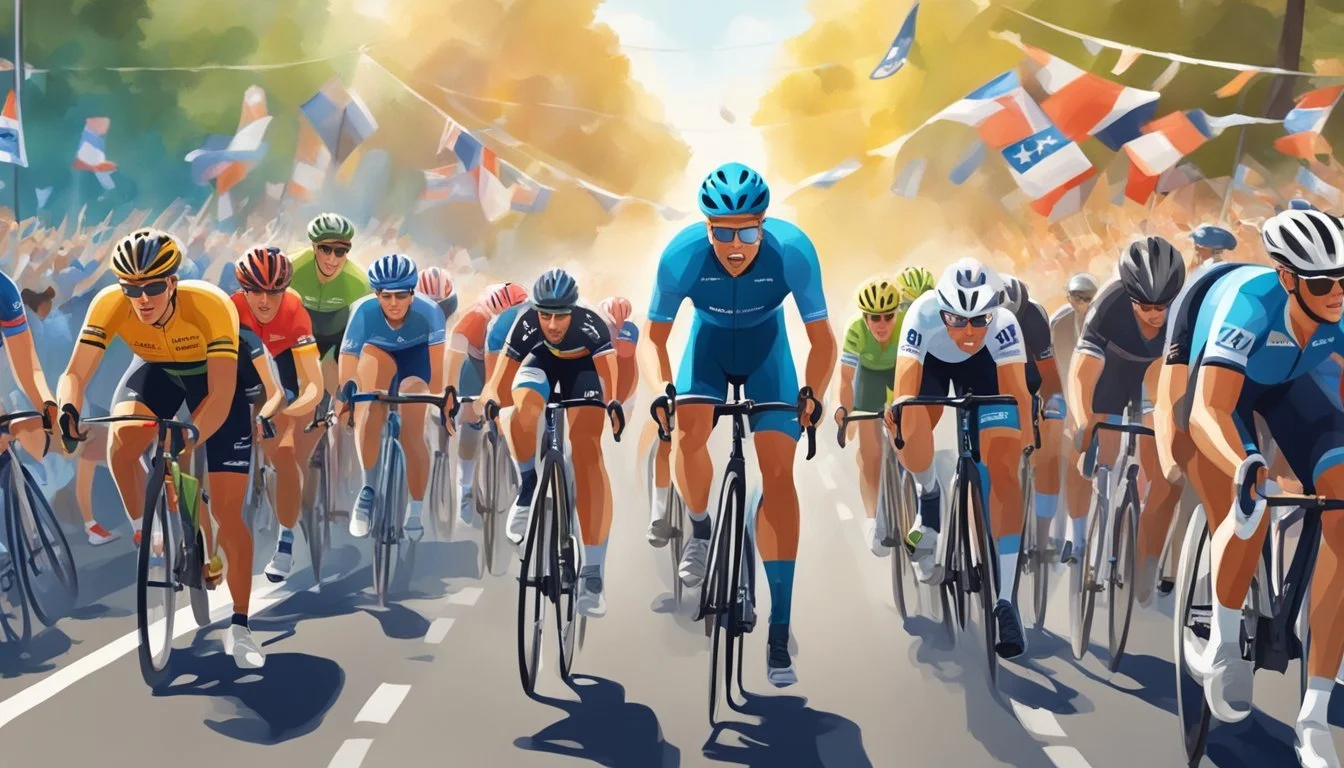Lance Armstrong Peak Performance Years Analyzed
Cycling Legend's Rise and Fall
Lance Armstrong, once hailed as a cycling legend, has become a controversial figure in sports history. His remarkable seven consecutive Tour de France victories from 1999 to 2005 captivated audiences worldwide. However, Armstrong's legacy was tarnished when he was stripped of his titles and banned from cycling for life due to his involvement in a sophisticated doping scheme.
Prime Video offers viewers a chance to explore the complex story of Lance Armstrong through documentaries like "Stop at Nothing: The Lance Armstrong Story." This film provides an intimate look at the man behind what has been called the greatest fraud in sporting history. It delves into how Armstrong enriched himself by deceiving fans, fellow athletes, and the sport itself.
For those interested in understanding the rise and fall of this cycling icon, Prime Video's selection of Armstrong-related content offers valuable insights. From his early triumphs to the explosive revelations that led to his downfall, these documentaries present a comprehensive view of Armstrong's controversial career and its lasting impact on professional cycling.
The Rise of Lance Armstrong
Lance Armstrong's ascent to cycling stardom was marked by fierce determination and unparalleled achievements. His journey from a small-town Texan to a global sports icon captivated audiences worldwide.
Early Years and Entry into Cycling
Born in 1971 in Plano, Texas, Armstrong showed athletic prowess from a young age. He excelled in swimming and triathlons as a teenager, displaying exceptional endurance.
At 16, Armstrong became a professional triathlete. He soon focused solely on cycling, joining the U.S. national team in 1990.
Armstrong's talent quickly became evident. He won the U.S. amateur championships in 1991 and competed in the Barcelona Olympics in 1992.
Tour de France Victories and Legacy
Armstrong's career reached new heights after overcoming testicular cancer in 1996. He returned to cycling with a renewed focus and determination.
In 1999, Armstrong won his first Tour de France. This victory marked the beginning of an unprecedented streak.
He dominated the Tour for seven consecutive years (1999-2005). Armstrong's tactical brilliance, physical conditioning, and mental toughness set him apart from competitors.
His success transformed him into a global sports icon. Armstrong became a symbol of perseverance and hope for cancer survivors worldwide.
His influence extended beyond cycling. The Livestrong Foundation, which he founded, raised millions for cancer research and support.
The Doping Scandal: Unraveling of a Legend
Lance Armstrong's cycling career crumbled under the weight of doping allegations. The scandal exposed years of systematic cheating and deception at the highest levels of professional cycling.
Investigations and Revelations
The United States Anti-Doping Agency (USADA) launched a comprehensive investigation into Armstrong's career in 2012. Former teammates provided damning testimonies, detailing sophisticated doping practices within Armstrong's teams.
USADA's report revealed a complex doping program involving banned substances like EPO, testosterone, and blood transfusions. The agency described it as "the most sophisticated, professionalized and successful doping program that sport has ever seen."
Armstrong vehemently denied the accusations for years. He attacked his accusers and used his cancer survivor status to deflect criticism.
Public Reaction and Armstrong's Admission
The cycling world reacted with shock and disbelief. Armstrong was stripped of his seven Tour de France titles and banned from competitive cycling for life.
In January 2013, Armstrong finally admitted to doping in a televised interview with Oprah Winfrey. He confessed to using performance-enhancing drugs throughout his career, including during all of his Tour de France victories.
The admission shattered Armstrong's carefully crafted image as a cancer-beating sports hero. Many fans felt betrayed, while others praised his eventual honesty.
The scandal had far-reaching consequences for cycling. It led to increased scrutiny of doping practices and reforms in anti-doping measures across professional sports.
Media Portrayals and Documentaries
Lance Armstrong's rise and fall have been extensively documented in various films and television productions. These works provide in-depth looks at his career, the doping scandal, and its aftermath.
Stop at Nothing: The Lance Armstrong Story
This documentary offers a compelling examination of Armstrong's controversial career. Released in 2014, it delves into the cyclist's pursuit of fame and success at any cost. The film features candid interviews with Armstrong's inner circle, shedding light on the truth behind his fraudulent actions.
Available on Prime Video, "Stop at Nothing" has garnered positive reviews. It holds a 7.5 rating on IMDb, indicating its impact on viewers. The documentary runs for 1 hour and 44 minutes, providing a thorough exploration of Armstrong's story.
Viewers can expect an intimate look at the explosive revelations that rocked the cycling world. The film's trailer hints at the gripping narrative that unfolds, showcasing Armstrong's determination and the eventual unraveling of his carefully crafted image.
Other Notable Works and Adaptations
Several other documentaries have explored Armstrong's complex legacy. "The Armstrong Lie" (2013) follows the cyclist's attempt to return to the Tour de France in 2009. It offers insights into his unrelenting passion for the sport.
"The World According to Lance" presents accounts from those who broke the "code of silence" in cycling. It paints a portrait of Armstrong as a ruthless competitor who prioritized winning above all else.
These films, along with others, contribute to a diverse media landscape surrounding Armstrong's story. They provide viewers with multiple perspectives on one of sports' most controversial figures.
Armstrong's Impact on Cycling and Sports Culture
Lance Armstrong's influence extended far beyond his competitive achievements, reshaping cycling and broader sports culture. His rise and fall left an indelible mark on athletic ethics and global perceptions of doping in sports.
Influence on Sports Ethics and Anti-Doping Policies
Armstrong's doping scandal prompted significant changes in anti-doping policies. Sports organizations implemented stricter testing protocols and harsher penalties for violations. The World Anti-Doping Agency (WADA) enhanced its efforts to detect performance-enhancing substances.
The cycling world faced intense scrutiny, leading to reforms within the Union Cycliste Internationale (UCI). Teams adopted more rigorous internal testing programs. Armstrong's case highlighted the complexity of doping networks, spurring investigations into support staff and team management.
Public awareness of doping issues in sports increased dramatically. Athletes faced greater pressure to prove their integrity. The scandal sparked debates about the ethics of performance enhancement in professional sports.
Armstrong's Legacy and the International Perspective
Internationally, Armstrong's story had a profound impact on cycling's image. His Tour de France victories had boosted the sport's popularity, especially in the United States. The subsequent revelation of his doping tarnished cycling's reputation globally.
Many countries reassessed their approach to sports governance and athlete development. Some nations increased funding for anti-doping research and education programs. The scandal prompted discussions about the pressures athletes face to succeed at all costs.
Armstrong's charity work, particularly with Livestrong, left a complex legacy. While the foundation raised millions for cancer research, its reputation suffered due to Armstrong's actions. This highlighted the intertwining of athletes' personal conduct with their philanthropic efforts.
Viewer Engagement and Critical Reception
Lance Armstrong documentaries continue to captivate audiences and spark debate. Fans and critics alike have strong opinions on the cycling icon's complex legacy.
Fan Base and Supporters
Armstrong retains a dedicated fan base despite his fall from grace. Many viewers remain fascinated by his story of triumph and deception. Some supporters admire his athletic achievements and cancer advocacy work, separating these from his doping scandal. Social media discussions reveal divided opinions, with some fans defending Armstrong's contributions to cycling and cancer awareness.
Prime Video's Armstrong documentaries draw substantial viewership. Engagement metrics show high completion rates, indicating strong viewer interest. Online forums buzz with discussions after new releases, demonstrating the enduring pull of Armstrong's narrative.
Critical Reviews and Ratings
Critics generally praise the production quality and in-depth analysis of Armstrong documentaries. Reviewers often note the films' cerebral approach to a complex subject. Ratings on platforms like Fandango at Home tend to be above average, reflecting audience appreciation for edifying content.
Professional critics highlight the documentaries' balanced portrayal of Armstrong's rise and fall. Many commend the filmmakers for presenting multiple perspectives. Some reviews critique certain films for being overly sympathetic to Armstrong, while others praise unflinching examinations of his deception.
Audience scores sometimes diverge from critical consensus, reflecting the polarizing nature of Armstrong's story. Drama-focused viewers rate the documentaries highly for their compelling narratives.




